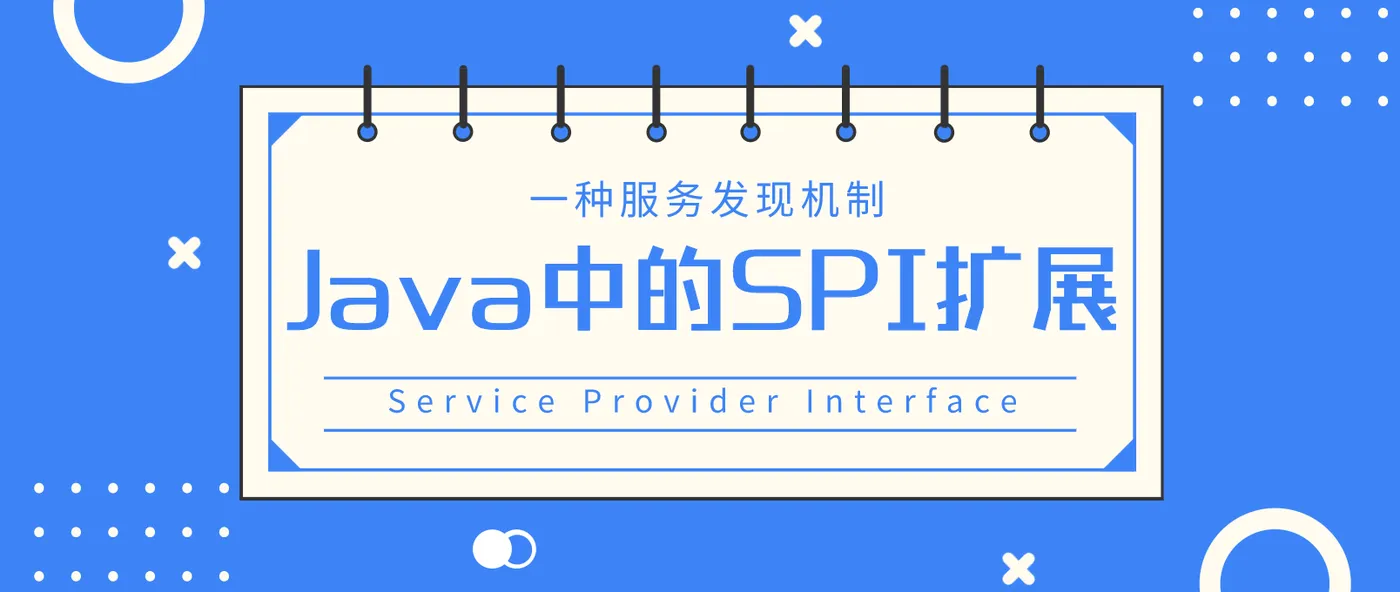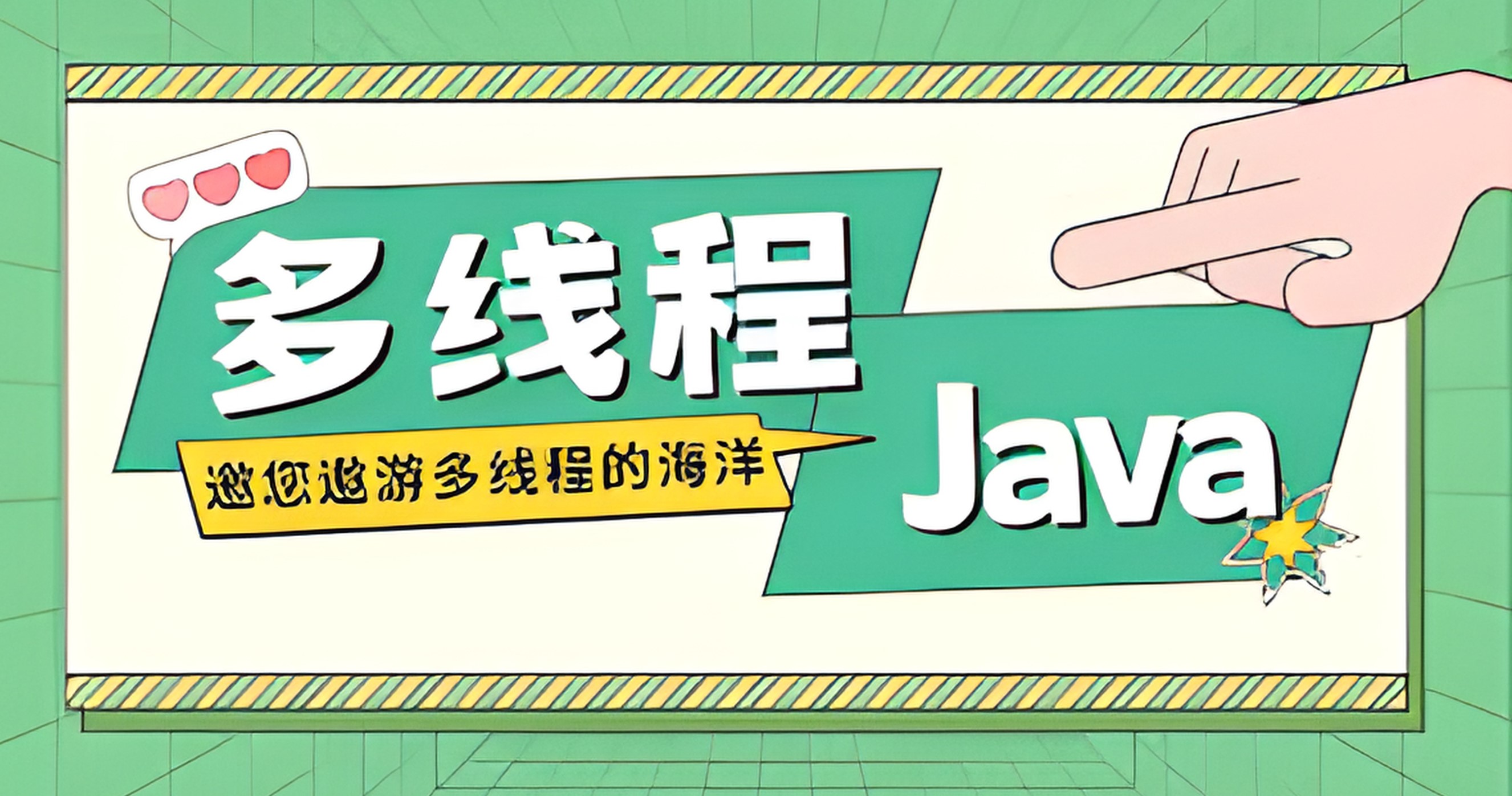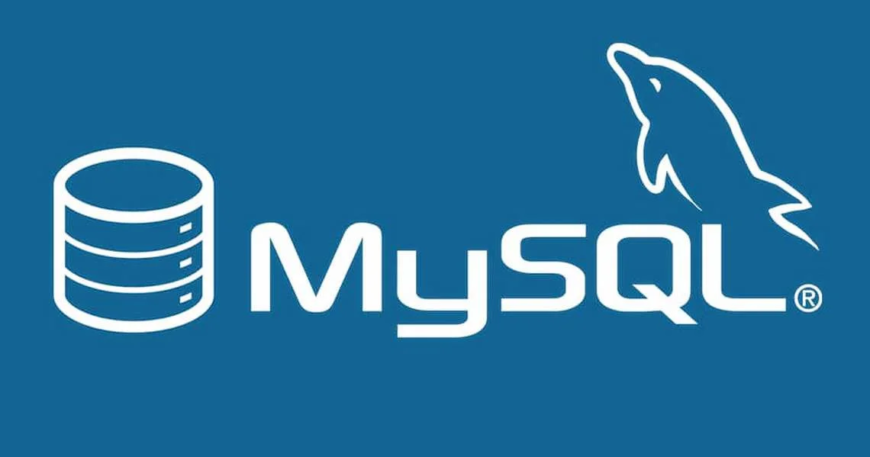异步多线程CompletableFuture | 总字数: 7.3k | 阅读时长: 30分钟 | 浏览量: |
任务开启
runAsync 和 supplyAsync
1 2 3 4 public static CompletableFuture<Void> runAsync (Runnable runnable) ;public static CompletableFuture<Void> runAsync (Runnable runnable, Executor executor) ;public static <U> CompletableFuture<U> supplyAsync (Supplier<U> supplier) ;public static <U> CompletableFuture<U> supplyAsync (Supplier<U> supplier, Executor executor) ;
runAsync 不支持返回值
supplyAsync 支持返回值
注意:没有指定 Executor 的方法会使用 ForkJoinPool.commonPool()作为它的线程池执行异步代码,如果指定线程池,则使用指定的线程池运行
1 2 3 4 5 6 7 8 9 10 11 12 13 14 15 16 17 18 19 20 21 22 23 24 25 26 27 public static void runAsync () throws Exception { CompletableFuture<Void> future = CompletableFuture.runAsync(() -> { try { TimeUnit.SECONDS.sleep(1 ); } catch (InterruptedException e) { } System.out.println("run end ..." ); }); future.get(); } public static void supplyAsync () throws Exception { CompletableFuture<Long> future = CompletableFuture.supplyAsync(() -> { try { TimeUnit.SECONDS.sleep(1 ); } catch (InterruptedException e) { } System.out.println("run end ..." ); return System.currentTimeMillis(); }); long time = future.get(); System.out.println("time = " +time); }
串行任务
thenAccept 和 thenAcceptAsync
1 2 3 public CompletionStage<Void> thenAccept (Consumer<? super T> action) ;public CompletionStage<Void> thenAcceptAsync (Consumer<? super T> action) ;public CompletionStage<Void> thenAcceptAsync (Consumer<? super T> action,Executor executor) ;
接收任务的处理结果并消费处理,无返回结果
thenAccept:使用主线程或者执行上一步任务的线程,串行执行任务。将上一步任务执行的【结果】作为当前任务方法执行时的【参数】,执行指定的函数,并且当前任务方法执行结束后,没有返回值。
thenAcceptAsync:串行执行任务,将上一步任务执行的【结果】作为当前任务方法执行时的【参数】,然后从公共的 commonPool 线程池中获取一个子线程,执行指定的函数,并且该任务方法执行结束后,没有返回值。
1 2 3 4 5 6 7 8 9 10 11 public static void thenAccept () throws Exception{ CompletableFuture<Void> future = CompletableFuture.supplyAsync(new Supplier <Integer>() { @Override public Integer get () { return new Random ().nextInt(10 ); } }).thenAccept(integer -> { System.out.println(integer); }); future.get(); }
thenRun 和 thenRunAsync
1 2 3 public CompletionStage<Void> thenRun (Runnable action) ;public CompletionStage<Void> thenRunAsync (Runnable action) ;public CompletionStage<Void> thenRunAsync (Runnable action,Executor executor) ;
跟 thenAccept 不一样的是,不关心任务的处理结果,只要上面的任务执行完成,就开始执行 thenAccept
thenRun:使用主线程或者执行上一步任务的子线程,串行执行任务,并且该任务方法执行结束后,没有返回值。
thenRunAsync:串行执行任务,从公共的 commonPool 线程池中获取一个子线程,执行指定的代码逻辑,并且该任务方法执行结束后,没有返回值。
1 2 3 4 5 6 7 8 9 10 11 public static void thenRun () throws Exception{ CompletableFuture<Void> future = CompletableFuture.supplyAsync(new Supplier <Integer>() { @Override public Integer get () { return new Random ().nextInt(10 ); } }).thenRun(() -> { System.out.println("thenRun ..." ); }); future.get(); }
thenApply 和 thenApplyAsync
1 2 3 public <U> CompletableFuture<U> thenApply (Function<? super T,? extends U> fn) ;public <U> CompletableFuture<U> thenApplyAsync (Function<? super T,? extends U> fn) ;public <U> CompletableFuture<U> thenApplyAsync (Function<? super T,? extends U> fn, Executor executor) ;
当一个线程依赖另一个线程时,可以使用 thenApply 来把这两个线程串行化
T:上一个任务返回结果的类型
U:当前任务的返回值类型
thenApply:使用主线程或者执行上一步任务的线程,串行执行任务。将上一步任务执行的【结果】作为当前任务方法执行时的【参数】,执行指定的函数,并且该任务方法执行结束后,将返回指定类型结果。
thenApplyAsync:串行执行任务,将上一步任务执行的【结果】作为当前任务方法执行时的【参数】,然后从公共的 commonPool 线程池中获取一个子线程,执行指定的函数,并且该任务方法执行结束后,将返回指定类型结果。
1 2 3 4 5 6 7 8 9 10 11 12 13 14 15 16 17 18 19 20 public static void thenApply () throws Exception { CompletableFuture<Long> future = CompletableFuture.supplyAsync(new Supplier <Long>() { @Override public Long get () { long result = new Random ().nextInt(100 ); System.out.println("result1=" +result); return result; } }).thenApply(new Function <Long, Long>() { @Override public Long apply (Long t) { long result = t*5 ; System.out.println("result2=" +result); return result; } }); long result = future.get(); System.out.println(result); }
handle 和 handleAsync
1 2 3 public <U> CompletionStage<U> handle (BiFunction<? super T, Throwable, ? extends U> fn) ;public <U> CompletionStage<U> handleAsync (BiFunction<? super T, Throwable, ? extends U> fn) ;public <U> CompletionStage<U> handleAsync (BiFunction<? super T, Throwable, ? extends U> fn,Executor executor) ;
handle 是执行任务完成时对结果的处理,和 thenApply 处理方式基本一样。不同的是 handle 是在任务完成后再执行,还可以处理异常的任务,thenApply 只可以执行正常的任务,任务出现异常则不执行
handle:使用主线程或者执行上一步任务的线程,串行执行任务。将上一步任务执行的【结果】和【异常】作为当前任务方法执行时的【参数】,执行指定的函数。并且该任务方法执行结束后,将返回指定类型结果。
handleAsync:串行执行任务,将上一步任务执行的【结果】和【异常】作为当前任务方法执行时的【参数】,然后从公共的 commonPool 线程池中获取一个子线程,执行指定的函数。并且该任务方法执行结束后,将返回指定类型结果。
1 2 3 4 5 6 7 8 9 10 11 12 13 14 15 16 17 18 19 20 21 public static void handle () throws Exception{ CompletableFuture<Integer> future = CompletableFuture.supplyAsync(new Supplier <Integer>() { @Override public Integer get () { int i= 10 /0 ; return new Random ().nextInt(10 ); } }).handle(new BiFunction <Integer, Throwable, Integer>() { @Override public Integer apply (Integer param, Throwable throwable) { int result = -1 ; if (throwable==null ){ result = param * 2 ; }else { System.out.println(throwable.getMessage()); } return result; } }); System.out.println(future.get()); }
whenComplete 和 whenCompleteAsync
1 2 3 public CompletableFuture<T> whenComplete (BiConsumer<? super T,? super Throwable> action) ;public CompletableFuture<T> whenCompleteAsync (BiConsumer<? super T,? super Throwable> action) ;public CompletableFuture<T> whenCompleteAsync (BiConsumer<? super T,? super Throwable> action, Executor executor) ;
当 CompletableFuture 的计算结果完成,或者抛出异常的时候,可以执行特定的 action
whenComplete:使用主线程或者执行上一步任务的线程,串行执行任务。将上一步任务执行的【结果】和【异常】作为当前任务方法执行时的【参数】,执行指定函数。并且当前任务执行结束后,没有返回值。
whenCompleteAsync:串行执行任务,将上一步任务执行的【结果】和【异常】作为当前任务方法执行时的【参数】,然后从公共的 commonPool 线程池中获取一个子线程,执行指定的函数。并且该任务方法执行结束后,没有返回值。
如果上一阶段中正常执行结束,则该方法的结果参数不为 null;
如果上一阶段中抛出异常,则该方法的异常参数不为 null;
1 2 3 4 5 6 7 8 9 10 11 12 13 14 15 16 17 18 public static void whenComplete () throws Exception { CompletableFuture<Void> future = CompletableFuture.runAsync(() -> { try { TimeUnit.SECONDS.sleep(1 ); } catch (InterruptedException e) { } if (new Random ().nextInt()%2 >=0 ) { int i = 12 /0 ; } System.out.println("run end ..." ); }).whenComplete(new BiConsumer <Void, Throwable>() { @Override public void accept (Void t, Throwable action) { System.out.println("执行完成!" ); } }); TimeUnit.SECONDS.sleep(2 ); }
thenCompose 和 thenComposeAsync
1 2 3 public <U> CompletableFuture<U> thenCompose (Function<? super T, ? extends CompletionStage<U>> fn) ;public <U> CompletableFuture<U> thenComposeAsync (Function<? super T, ? extends CompletionStage<U>> fn) ;public <U> CompletableFuture<U> thenComposeAsync (Function<? super T, ? extends CompletionStage<U>> fn, Executor executor) ;
允许对两个 CompletionStage 进行流水线操作,第一个操作完成时,将其结果作为参数传递给第二个操作
thenCompose:使用主线程或者执行上一步任务的线程,串行执行任务。按顺序组合两个有依赖关系的任务,将上一步任务执行的【结果】作为当前任务方法执行时的【参数】,执行指定的函数。并且该任务方法完成后,将返回并执行一个新的任务。
thenComposeAsync:串行执行任务,按顺序组合俩个有依赖关系的任务,将上一步任务执行的【结果】作为当前任务方法执行时的【参数】,然后从公共的 commonPool 线程池中获取一个子线程,执行指定的函数,并且该任务方法完成后,将返回并执行一个新的任务。
1 2 3 4 5 6 7 8 9 10 11 12 13 14 15 16 17 18 19 20 21 22 23 public static void thenCompose () throws Exception { CompletableFuture<Integer> f = CompletableFuture.supplyAsync(new Supplier <Integer>() { @Override public Integer get () { int t = new Random ().nextInt(3 ); System.out.println("t1=" +t); return t; } }).thenCompose(new Function <Integer, CompletionStage<Integer>>() { @Override public CompletionStage<Integer> apply (Integer param) { return CompletableFuture.supplyAsync(new Supplier <Integer>() { @Override public Integer get () { int t = param *2 ; System.out.println("t2=" +t); return t; } }); } }); System.out.println("thenCompose result : " +f.get()); }
并行任务
thenCombine 和 thenCombineAsync
1 2 3 public <U,V> CompletionStage<V> thenCombine (CompletionStage<? extends U> other,BiFunction<? super T,? super U,? extends V> fn) ;public <U,V> CompletionStage<V> thenCombineAsync (CompletionStage<? extends U> other,BiFunction<? super T,? super U,? extends V> fn) ;public <U,V> CompletionStage<V> thenCombineAsync (CompletionStage<? extends U> other,BiFunction<? super T,? super U,? extends V> fn,Executor executor) ;
thenCombine 会把两个 CompletionStage 的任务都执行任务后,把两个任务的结果一块交给 thenCombine 来处理
thenCombine:并行执行任务,从 commonPool 线程池中获取线程,并行执行两个任务,等到两个任务都执行结束后,执行一个新的任务方法,将之前两个任务的执行【结果】作为新任务方法的【参数】,然后返回并执行新任务。新任务执行结束后,将返回指定类型结果。
thenCombineAsync:并行执行任务,从公共的 commonPool 线程池中获取线程,并行执行两个任务,等到两个任务都执行结束后,继续从公共的 commonPool 线程池中获取一个子线程,执行一个新的任务方法,将之前两个任务的执行【结果】作为新任务方法的【参数】,然后返回并执行新任务。新任务执行结束后,将返回指定类型结果。
1 2 3 4 5 6 7 8 9 10 11 12 13 14 15 16 17 18 19 20 21 public static void thenCombine () throws Exception { CompletableFuture<String> future1 = CompletableFuture.supplyAsync(new Supplier <String>() { @Override public String get () { return "hello" ; } }); CompletableFuture<String> future2 = CompletableFuture.supplyAsync(new Supplier <String>() { @Override public String get () { return "hello" ; } }); CompletableFuture<String> result = future1.thenCombine(future2, new BiFunction <String, String, String>() { @Override public String apply (String t, String u) { return t+" " +u; } }); System.out.println(result.get()); }
thenAcceptBoth 和 thenAcceptBothAsync
1 2 3 public <U> CompletionStage<Void> thenAcceptBoth (CompletionStage<? extends U> other,BiConsumer<? super T, ? super U> action) ;public <U> CompletionStage<Void> thenAcceptBothAsync (CompletionStage<? extends U> other,BiConsumer<? super T, ? super U> action) ;public <U> CompletionStage<Void> thenAcceptBothAsync (CompletionStage<? extends U> other,BiConsumer<? super T, ? super U> action,Executor executor) ;
当两个 CompletionStage 都执行完成后,把结果一块交给 thenAcceptBoth 来进行消耗
thenAcceptBoth:并行执行任务,从公共的 commonPool 线程池中获取线程,并行执行两个任务,等到两个任务都执行结束后,执行一个新的任务方法,将之前两个任务的执行【结果】作为新任务方法的【参数】,然后返回并执行新任务。新任务执行结束后,没有返回值。
thenAcceptBothAsync:并行执行任务,从公共的 commonPool 线程池中获取线程,并行执行两个任务,等到两个任务都执行结束后,继续从公共的 commonPool 线程池中获取一个子线程,执行一个新的任务方法,将之前两个任务的执行【结果】作为新任务方法的【参数】,然后返回并执行新任务。新任务执行结束后,没有返回值。
1 2 3 4 5 6 7 8 9 10 11 12 13 14 15 16 17 18 19 20 21 22 23 24 25 26 27 28 29 30 31 32 33 34 public static void thenAcceptBoth () throws Exception { CompletableFuture<Integer> f1 = CompletableFuture.supplyAsync(new Supplier <Integer>() { @Override public Integer get () { int t = new Random ().nextInt(3 ); try { TimeUnit.SECONDS.sleep(t); } catch (InterruptedException e) { e.printStackTrace(); } System.out.println("f1=" +t); return t; } }); CompletableFuture<Integer> f2 = CompletableFuture.supplyAsync(new Supplier <Integer>() { @Override public Integer get () { int t = new Random ().nextInt(3 ); try { TimeUnit.SECONDS.sleep(t); } catch (InterruptedException e) { e.printStackTrace(); } System.out.println("f2=" +t); return t; } }); f1.thenAcceptBoth(f2, new BiConsumer <Integer, Integer>() { @Override public void accept (Integer t, Integer u) { System.out.println("f1=" +t+";f2=" +u+";" ); } }); }
runAfterBoth 和 runAfterBothAsync
1 2 3 public CompletionStage<Void> runAfterBoth (CompletionStage<?> other,Runnable action) ;public CompletionStage<Void> runAfterBothAsync (CompletionStage<?> other,Runnable action) ;public CompletionStage<Void> runAfterBothAsync (CompletionStage<?> other,Runnable action,Executor executor) ;
两个 CompletionStage 都完成了计算才会执行下一步的操作(Runnable)
runAfterBoth:并行执行任务,从公共的 commonPool 线程池中获取线程,并行执行两个任务,等到两个任务都执行结束后,执行一个新的任务方法,该方法执行结束后将返回并执行一个新任务。新任务方法执行结束后,没有返回值。
runAfterBothAsync:并行执行任务,从公共的 commonPool 线程池中获取线程,并行执行两个任务,等到两个任务都执行结束后,继续从 commonPool 线程池中获取一个子线程,执行一个新的任务方法,该方法执行结束后将返回并执行一个新任务。新任务执行结束后,没有返回值。
1 2 3 4 5 6 7 8 9 10 11 12 13 14 15 16 17 18 19 20 21 22 23 24 25 26 27 28 29 30 31 32 33 34 public static void runAfterBoth () throws Exception { CompletableFuture<Integer> f1 = CompletableFuture.supplyAsync(new Supplier <Integer>() { @Override public Integer get () { int t = new Random ().nextInt(3 ); try { TimeUnit.SECONDS.sleep(t); } catch (InterruptedException e) { e.printStackTrace(); } System.out.println("f1=" +t); return t; } }); CompletableFuture<Integer> f2 = CompletableFuture.supplyAsync(new Supplier <Integer>() { @Override public Integer get () { int t = new Random ().nextInt(3 ); try { TimeUnit.SECONDS.sleep(t); } catch (InterruptedException e) { e.printStackTrace(); } System.out.println("f2=" +t); return t; } }); f1.runAfterBoth(f2, new Runnable () { @Override public void run () { System.out.println("上面两个任务都执行完成了。" ); } }); }
applyToEither 和 applyToEitherAsync
1 2 3 public <U> CompletionStage<U> applyToEither (CompletionStage<? extends T> other,Function<? super T, U> fn) ;public <U> CompletionStage<U> applyToEitherAsync (CompletionStage<? extends T> other,Function<? super T, U> fn) ;public <U> CompletionStage<U> applyToEitherAsync (CompletionStage<? extends T> other,Function<? super T, U> fn,Executor executor) ;
两个 CompletonStage 谁执行返回的结果快,就用那个 CompletionStage 的结果进行下一步的转化操作
applyToEither:并行执行任务,从公共的 commonPool 线程池中获取线程,并行执行两个任务,两个任务任意一个执行结束后,执行一个新的任务方法,将之前两个任务的执行【结果】作为新任务方法的【参数】,然后返回并执行新任务。新任务执行结束后,没有返回值。
applyToEitherAsync:并行执行任务,从公共的 commonPool 线程池中获取线程,并行执行两个任务,两个任务任意一个执行结束后,继续从 commonPool 线程池中获取一个子线程,执行一个新的任务方法,将之前先执行结束的任务的执行【结果】作为新任务方法的【参数】,然后返回并执行新任务。新任务执行结束后,没有返回值。
1 2 3 4 5 6 7 8 9 10 11 12 13 14 15 16 17 18 19 20 21 22 23 24 25 26 27 28 29 30 31 32 33 34 35 36 37 public static void applyToEither () throws Exception { CompletableFuture<Integer> f1 = CompletableFuture.supplyAsync(new Supplier <Integer>() { @Override public Integer get () { int t = new Random ().nextInt(3 ); try { TimeUnit.SECONDS.sleep(t); } catch (InterruptedException e) { e.printStackTrace(); } System.out.println("f1=" +t); return t; } }); CompletableFuture<Integer> f2 = CompletableFuture.supplyAsync(new Supplier <Integer>() { @Override public Integer get () { int t = new Random ().nextInt(3 ); try { TimeUnit.SECONDS.sleep(t); } catch (InterruptedException e) { e.printStackTrace(); } System.out.println("f2=" +t); return t; } }); CompletableFuture<Integer> result = f1.applyToEither(f2, new Function <Integer, Integer>() { @Override public Integer apply (Integer t) { System.out.println(t); return t * 2 ; } }); System.out.println(result.get()); }
runAfterEither 和 runAfterEitherAsync
1 2 3 public CompletionStage<Void> runAfterEither (CompletionStage<?> other,Runnable action) ;public CompletionStage<Void> runAfterEitherAsync (CompletionStage<?> other,Runnable action) ;public CompletionStage<Void> runAfterEitherAsync (CompletionStage<?> other,Runnable action,Executor executor) ;
两个 CompletionStage 任何一个完成了都会执行下一步的操作(Runnable)
runAfterEither:并行执行任务,从公共的 commonPool 线程池中获取线程,并行执行两个任务,两个任务任意一个执行结束后,执行一个新的任务方法,该方法执行结束后将返回并执行一个新任务。新任务执行结束后,没有返回值。
runAfterEitherAsync:并行执行任务,从公共的 commonPool 线程池中获取线程,并行执行两个任务,两个任务任意一个执行结束后,继续从 commonPool 线程池中获取一个子线程,执行一个新的任务方法,该方法执行结束后将返回并执行一个新任务。新任务执行结束后,没有返回值。
1 2 3 4 5 6 7 8 9 10 11 12 13 14 15 16 17 18 19 20 21 22 23 24 25 26 27 28 29 30 31 32 33 34 35 public static void runAfterEither () throws Exception { CompletableFuture<Integer> f1 = CompletableFuture.supplyAsync(new Supplier <Integer>() { @Override public Integer get () { int t = new Random ().nextInt(3 ); try { TimeUnit.SECONDS.sleep(t); } catch (InterruptedException e) { e.printStackTrace(); } System.out.println("f1=" +t); return t; } }); CompletableFuture<Integer> f2 = CompletableFuture.supplyAsync(new Supplier <Integer>() { @Override public Integer get () { int t = new Random ().nextInt(3 ); try { TimeUnit.SECONDS.sleep(t); } catch (InterruptedException e) { e.printStackTrace(); } System.out.println("f2=" +t); return t; } }); f1.runAfterEither(f2, new Runnable () { @Override public void run () { System.out.println("上面有一个已经完成了。" ); } }); }
acceptEither 和 acceptEitherAsync
1 2 3 public CompletionStage<Void> acceptEither (CompletionStage<? extends T> other,Consumer<? super T> action) ;public CompletionStage<Void> acceptEitherAsync (CompletionStage<? extends T> other,Consumer<? super T> action) ;public CompletionStage<Void> acceptEitherAsync (CompletionStage<? extends T> other,Consumer<? super T> action,Executor executor) ;
两个 CompletionStage 谁执行返回的结果快,就用那个 CompletionStage 的结果进行下一步的消耗操作
AcceptEither:并行执行任务,从公共的 commonPool 线程池中获取线程,并行执行两个任务,两个任务任意一个执行结束后,执行一个新的任务方法,将之前两个任务的执行【结果】作为新任务方法的【参数】,然后返回并执行新任务。新任务执行结束后,没有返回值。
AcceptEitherAsync:并行执行任务,从公共的 commonPool 线程池中获取线程,并行执行两个任务,两个任务任意一个执行结束后,继续从公共的 commonPool 线程池中获取一个子线程,执行一个新的任务方法,将之前两个任务的执行【结果】作为新任务方法的【参数】,然后返回并执行新任务。新任务执行结束后,没有返回值。
1 2 3 4 5 6 7 8 9 10 11 12 13 14 15 16 17 18 19 20 21 22 23 24 25 26 27 28 29 30 31 32 33 34 35 public static void acceptEither () throws Exception { CompletableFuture<Integer> f1 = CompletableFuture.supplyAsync(new Supplier <Integer>() { @Override public Integer get () { int t = new Random ().nextInt(3 ); try { TimeUnit.SECONDS.sleep(t); } catch (InterruptedException e) { e.printStackTrace(); } System.out.println("f1=" +t); return t; } }); CompletableFuture<Integer> f2 = CompletableFuture.supplyAsync(new Supplier <Integer>() { @Override public Integer get () { int t = new Random ().nextInt(3 ); try { TimeUnit.SECONDS.sleep(t); } catch (InterruptedException e) { e.printStackTrace(); } System.out.println("f2=" +t); return t; } }); f1.acceptEither(f2, new Consumer <Integer>() { @Override public void accept (Integer t) { System.out.println(t); } }); }
allOf
并行执行任务,从公共的 commonPool 线程池中获取线程,并行执行多个任务方法,等待全部任务方法都执行完成后结束。任务执行结束后,没有返回值。
注意:如果传入的 CompletableFuture <?> 中的其中一个阶段异常完成时,那么返回的 CompletableFuture < Void > 也异常完成,并将此异常作为异常原因
1 2 3 4 5 6 7 8 9 10 11 12 13 14 15 16 17 18 19 20 21 22 23 24 25 26 27 28 29 30 31 32 33 public static void allOf () throws Exception { Map<String, String> userMap = new ConcurrentHashMap <>(3 ); Runnable runnable1 = () -> { System.out.println("任务1-成功获取用户基本信息" ); userMap.put("userInfo" , "{name: mydlq, age: 18}" ); }; Runnable runnable2 = () -> { System.out.println("任务2-成功获取用户头像" ); userMap.put("avatar" , "http://www.xxx.com/avatar" ); }; Runnable runnable3 = () -> { System.out.println("任务3-成功获取用户余额" ); userMap.put("balance" , "1000" ); }; CompletableFuture<Void> cf = CompletableFuture.allOf( CompletableFuture.runAsync(runnable1), CompletableFuture.runAsync(runnable2), CompletableFuture.runAsync(runnable3) ); cf.join(); System.out.println("获取的用户信息:" ); for (Map.Entry<String, String> entry : userMap.entrySet()) { System.out.println(entry.getKey() + ": " + entry.getValue()); } }
anyOf
并行执行任务,从公共的 commonPool 线程池中获取线程,并行执行多个任务方法,等待多个任务方法中任意一个执行完成后结束。任务执行结束后,返回第一个先执行完成任务的返回值。
注意:如果传入的全部 CompletableFuture <?> 阶段都没有完成前,任意一个阶段执行过程出现异常并没有处理,那么返回的 CompletableFuture < Object > 也异常完成,并将此异常作为异常原因
1 2 3 4 5 6 7 8 9 10 11 12 13 14 15 16 17 18 19 20 21 22 23 24 25 public static void anyOf () throws Exception { Supplier<String> supplier1 = () -> { System.out.println("通道1" ); return "通道1-成功获取信息" ; }; Supplier<String> supplier2 = () -> { System.out.println("通道2" ); return "通道2-成功获取信息" ; }; Supplier<String> supplier3 = () -> { System.out.println("通道3" ); return "通道3-成功获取信息" ; }; CompletableFuture<Object> cf = CompletableFuture.anyOf( CompletableFuture.supplyAsync(supplier1), CompletableFuture.supplyAsync(supplier2), CompletableFuture.supplyAsync(supplier3) ); Object result = cf.join(); System.out.println(result); }
任务结束
get
获取任务执行结果,如果任务尚未完成则进行堵塞状态,如果任务正常完成则返回执行结果,如果异常完成或执行过程中引发异常,这时就会抛出(运行时)异常。
1 2 3 4 5 6 public static void get () throws ExecutionException, InterruptedException { CompletableFuture<String> cf = CompletableFuture.supplyAsync(() -> "执行结果" ); cf.get(); }
join
获取任务执行结果,如果任务尚未完成则进行堵塞状态,如果任务正常完成则返回执行结果,如果异常完成或执行过程中引发异常,这时就会抛出(未经检查)异常。
1 2 3 4 5 6 public static void join () throws Exception { CompletableFuture<String> cf = CompletableFuture.supplyAsync(() -> "执行结果" ); cf.join(); }
getNow
立即获取任务执行结果,如果任务没有完成则返回设定的默认值,如果任务正常完成则返回执行结果。
1 2 3 4 5 6 7 8 9 10 11 12 13 14 15 16 17 18 19 20 21 22 23 24 25 public static void getNow () throws Exception { CompletableFuture<String> cf = CompletableFuture.supplyAsync(() -> { sleep(5 ); return "示例-执行完成" ; }); sleep(new Random ().nextInt(10 )); String result = cf.getNow("默认值" ); System.out.println(result); } public static void sleep (long millis) { try { Thread.sleep(millis); } catch (InterruptedException e) { e.printStackTrace(); } }
cancel
取消任务,如果任务尚未执行结束,调用该方法成功取消任务时返回 true,否则返回 false。并且任务取消成功后,通过 get/join 方法获取结果时,会抛出 CancellationException 异常。
1 2 3 4 5 6 7 8 9 10 11 12 13 14 15 16 17 18 19 20 21 22 23 24 25 26 27 28 29 30 31 public static void cancel () throws ExecutionException, InterruptedException { CompletableFuture<Void> cf = CompletableFuture.runAsync(() -> { sleep(new Random ().nextInt(10 )); System.out.println("示例-执行任务完成" );‘ }); sleep(new Random ().nextInt(10 )); boolean cancelResult = cf.cancel(true ); System.out.println("取消任务: " + cancelResult); try { cf.get(); } catch (CancellationException e) { System.out.println("获取任务失败,任务已经被取消" ); } } public static void sleep (long millis) { try { Thread.sleep(millis); } catch (InterruptedException e) { e.printStackTrace(); } }
查看任务状态
isDone
查看任务是否执行完成,如果当前阶段执行完成(无论是正常完成还是异常完成)则返回 true,否则返回 false。
1 2 3 4 5 6 7 8 9 10 public static void isDone () throws InterruptedException { CompletableFuture<Void> cf = CompletableFuture.runAsync(() -> System.out.println("任务执行中..." )); System.out.println("任务是否完成: " + cf.isDone()); Thread.sleep(1000L ); System.out.println("任务是否完成: " + cf.isDone()); }
isCancelled
查看当前阶段任务是否成功取消,如果此阶段任务在完成之前被取消则返回 true,否则返回 false。
1 2 3 4 5 6 7 8 public static void isCancelled () throws Exception { CompletableFuture<Void> cf = CompletableFuture.runAsync(() -> System.out.println("执行 CompletableFuture 任务" )); cf.cancel(true ); System.out.println("是否取消任务: " + cf.isCancelled()); }
isCompletedExceptionally
查看当前阶段任务是否以异常的方式执行完成,比如取消任务、突然终止任务或者执行过程出现异常等,都属于异常方式执行完成,如果是以异常方式完成则返回 true,否则返回 false。
1 2 3 4 5 6 7 8 9 10 11 12 13 public static void isCompletedExceptionally () throws InterruptedException { CompletableFuture<Void> cf = CompletableFuture.runAsync(() -> { System.out.println("执行中..." ); System.out.println(1 /0 ); }); Thread.sleep(1000L ); System.out.println("是否异常完成: " + cf.isCompletedExceptionally()); }
设置任务结果
obtrudeValue
设置(重置)调用 get/join 方法时返回指定值,无论任务是否执行完成。
1 2 3 4 5 6 7 8 9 public static void obtrudeValue () throws ExecutionException, InterruptedException { CompletableFuture<String> cf = CompletableFuture.supplyAsync(() -> "示例-执行完成" ); cf.obtrudeValue("示例-强制设置返回值-无论成功失败" ); String result = cf.get(); System.out.println(result); }
obtrudeException
设置(重置)调用 get/join 方法时返回指定异常,无论任务是否执行完成。
1 2 3 4 5 6 7 8 9 public static void obtrudeException () throws ExecutionException, InterruptedException { CompletableFuture<String> cf = CompletableFuture.supplyAsync(() -> "示例-执行完成" ); cf.obtrudeException(new Exception ("未知异常" )); String result = cf.get(); System.out.println(result); }
complete
设置调用 get/join 方法时返回指定值。不过需要注意的是,如果任务没有执行完成,则可以通过该方法设置返回值,并且返回 true。如果任务已经完成,则无法配置,并且返回 false。
1 2 3 4 5 6 7 8 9 10 11 12 public static void complete () throws ExecutionException, InterruptedException { CompletableFuture<String> cf = CompletableFuture.supplyAsync(() -> "示例-执行完成" ); boolean setResult = cf.complete("示例-任务没有完成-设置返回值" ); System.out.println("设置返回值为执行结果: " + setResult); String result = cf.get(); System.out.println(result); }
completeException
设置调用 get/join 方法时返回指定异常。不过需要注意的是,如果任务没有执行完成,则可以通过该方法设置返回值,并且返回 true。如果任务已经完成,则无法配置,并且返回 false。
1 2 3 4 5 6 7 8 9 10 11 12 public static void completeExceptionally () throws ExecutionException, InterruptedException { CompletableFuture<String> cf = CompletableFuture.supplyAsync(() -> "示例-执行完成" ); boolean setResult = cf.completeExceptionally(new Exception ("未知异常" )); System.out.println("设置返回值为执行结果: " + setResult); String result = cf.get(); System.out.println(result); }
设置超时时间
orTimeout
设置任务超时后抛出异常信息
1 2 3 4 5 6 CompletableFuture<String> future = CompletableFuture.supplyAsync(() -> { sleep(3000 ); return "完成" ; }).orTimeout(2 , TimeUnit.SECONDS); future.get();
completeOnTimeout
设置任务超时后返回的默认值
1 2 3 4 5 6 CompletableFuture<String> future = CompletableFuture.supplyAsync(() -> { sleep(3 ); return "完成" ; }).completeOnTimeout("超时默认值" , 2 , TimeUnit.SECONDS); System.out.println(future.get());
任务异常处理
exceptionally
1 public CompletableFuture<T> exceptionally (Function<Throwable,? extends T> fn)
判断上一个任务执行时是否发生异常,如果是则就会执行 exceptionally 方法,并且将上一步异常作为当前方法的参数,然后对异常进行处理。当然,如果上一阶段执行过程中没有出现异常,则不会执行 exceptionally 方法。
1 2 3 4 5 6 7 8 9 10 11 12 13 14 15 16 17 18 19 public static void exceptionally () throws ExecutionException, InterruptedException { CompletableFuture<String> cf = CompletableFuture .supplyAsync(() -> { if (new Random ().nextInt(2 ) != 0 ) { throw new RuntimeException ("模拟发生异常" ); } return "正常结束" ; }) .exceptionally(Throwable::getMessage); String result = cf.get(); System.out.println(result); }








